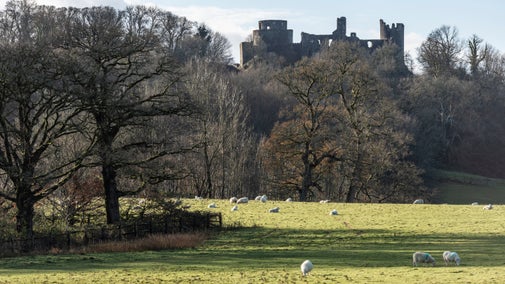
Dinefwr's collections
Explore the objects and works of art we care for at Dinefwr on the National Trust Collections website.

Discover the history of Dinefwr and Newton House, home to the Rhys (or Rice) family for over three hundred years. Learn how Capability Brown influenced the landscape at Dinefwr and how the house became a jazz venue before falling into disrepair in the 1970s.
The Rhys family were descendants of The Lord Rhys, the powerful Prince of the Welsh Kingdom of Deheubarth, who ruled from the now ruined Dinefwr Castle.
In 1547 Gruffudd, the younger son of Rhys ap Gruffudd, petitioned Edward VI to restore the status of his family. This was granted, so Gruffudd ap Rhys - or Griffith Rice as he was now known - began buying back his family’s lost land.
Over the next ten years Griffith steadily reclaimed property - but in 1557 it was seized by the Crown again when he was convicted of murder. Somehow, he gained a pardon and carried on building up the estate. His son Walter and grandson Henry continued this work into the 17th century.
By 1659 Henry’s son Edward owned the Dinefwr estate. He created a deer park, moved roads ‘for the enlargement of his house’, and built boundary walls. With Dinefwr back in the family, the Rice family started an important new phase of landscape development – and this was continued after Edward’s death (in about 1663) by his brother Walter.
During the 18th century, the gardens and parks of many large houses were redesigned to reflect a new understanding and admiration of the natural landscape – and Dinefwr Park was no exception.
The owners of the Dinefwr Estate at that time were George Rice and his wife Cecil, who was the only child of the fabulously wealthy William Talbot of Hensol in Glamorganshire. Well to do and well connected, they spent much of their time in London. They were influenced by new ideas of philosophy and culture, especially the view that nature could be art.

Formal features such as avenues of trees and straight-sided flowerbeds were removed to be replaced with rolling lawns, sinuous lakes and clumps of trees. Carefully composed vistas were created. Some directed the viewer to the wider landscape beyond the walls of the park, others focused on ornamental buildings.
There was no division between the park and the house. Livestock was kept away from the windows by a ‘ha-ha’, an invisible ditch and wall.
Lancelot ‘Capability’ Brown was the most famous landscape designer of the 18th century. Between 1751 and 1783 he designed 170 gardens and estates around Britain, and his approach was imitated in many more.
Brown visited Dinefwr in 1775 and, obviously impressed, he wrote ‘I wish my journey may prove of use to the place. Nature has been truly bountiful and art has done no harm’. George Rice asked Brown to suggest improvements to the landscape.
Brown recommended building and moving some walls, fences and paths, combining fields into large meadows, moving the kitchen garden to the Home Farm at Little Newton, creating a new plantation, and moving the Llandeilo entrance. Some of Brown’s proposals were carried out but others, such as creating a garden in the deer park, were ignored.
There has been a house on this site since pre-medieval times but Newton House, built in 1660 by Edward Rice, takes its name from the ‘New Town’ built for English settlers in the medieval period. Even though the town was no longer in existence, its former presence was the inspiration for the naming the house.
Over the years the house has undergone various redesigns, the most notable in the 1850s when a Gothic façade, fashionable at the time, was added and remains to this day. Many of the original 17th-century features can still be seen within the house, including the magnificent grand staircase and exceptional ornate ceilings.
The Rhys family faced huge financial challenges in the mid-20th century, with two lots of death duties falling simultaneously on the estate. To try and raise funds to maintain the house, Richard, the 9th Baron Dynevor, established a creative programme of arts in the house supported by the Arts Council of Wales.
For a brief, magical period in the 1960s the house hosted prestigious exhibitions and performances including famous names like jazz legend, Cleo Laine. The inspiration, energy and vision to bring such a rich cultural programme to rural west Wales flourished for under a decade and by the mid-1970s the house and grounds were sold and sadly, subsequently fell into disrepair.
The park came into the care of the National Trust in 1987, with Newton House following in 1990.

Explore the objects and works of art we care for at Dinefwr on the National Trust Collections website.

Nestled in Dinefwr’s parkland near Llandeilo, Newton House is a relaxed and informal Welsh country house. A visit here incorporates both the historic and the contemporary.

Take a stroll through Dinefwr Park near Llandeilo, a stunning 800-acre estate where you can spot a variety of wildlife and some of the oldest trees in Britain.